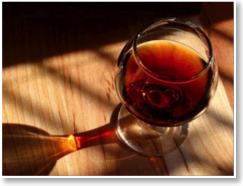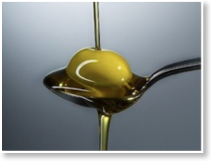
Red wines
The red wine in Umbria is a core of high quality in 'art of good wine. The DOC designation of origin, and the even more protective DOCG ensure good red wine from Umbria and most of the red wines of the region. Some grape varieties, however, deserve special mention. The most popular red wines are from of varieties of Sangiovese, followed by those of Ciliegiolo of Canaiolo of Montepulciano, Merlot, Cabernet, Pinot Noir and even Gamay. Also some local grape variety has been mantained, although certainly not indigenous, such as the fampous Sagrantino. The various microclimates of the region allow the planting of more vines even at short distances, so that the red wines are made from grapes combinations that increase the textures. An example is certainly the “Sagrantino di Montefalco” a real “natural masterpiece”. There are vestiges of this wine also in the “Historia Naturalis” written by “Plinio il Vecchio”. Sagrantino is a vary tasty red wine with an intense ruby red colour changing to garnet after aeging. The shent is very delicate and recall that of blackberries, when it is young tannins are quite intens thus making Sagrantino perfect for aeging. It comes perfectly along with beaf, roast game, wild boar and seasoned cheese. Sagrantino di Montefalco is e DOCG wine so it can be produced only under a severe regulation that limits the region to the areas of Bevagna, Gualdo Cattaneo, Castel Ritaldi and Giano dell’Umbria, the so called “umbrian Chiantishire”.

Umbria is also famous for its white wines produced near Orvieto, Todi and Spoleto as well as on the hills surrounding Lake Trasimeno. The DOC, denomination of controlled origin, and the even more protective DOCG are the guarantee of quality of the Umbrian white wines. The most diffused white wines belong to the local types of the Trebbiano white wine, like the Procanico, that has been the basic grape of the Orvieto white wines. Some indigenous varieties are also resisting and even increasing their own production year after year like the Trebbiano Spoletino wine, the Verdello wine and above all the Grechetto wine. The various microclimates of the region allow the cultivation of more grapes also at short distances, so that the white wines are produced with combinations of grapes that increase their taste shades.
It is also the case of the Italian white wine of the Hills of the Trasimeno, where the lake exercises its influence on the vineyards and allows to obtain vivacious whites, and at the same time elegant and refined, or wines of the area of Torgiano where white wines are fragrant. The Altotiberini hills above the Tevere river at the northern limit of the region are taking profit of the Trebbiano Toscano grapes and of the Malvasia of the Chianti and produce some excellent light wines. The Amerini Hills, at the east of the Tevere river and along the valley of the Nera river, and the Martani hills, on the high plains between Todi and Foligno are generating doc wines among which the most famous are the Trebbiano, the Grechetto, and the Grechetto of Todi. At last, the Orvietano, is the area of the famous vineyards of Orvieto.
OLIVE OIL
Since 1992 Umbrian oil got the label DOP (Protected Origin Denomination) In order to certify the high quality of this product. DOP products in fact, similarly to DOCG wines have to satisfy a very precise and severe regulation in terms of localization, production process and storage. Umbrian DOP oils summarize the excellence of center Italy oil. As for the wines there are several kinds of oils depending on the olives, on the soil, and on the squeezing procedures. Tastes are different and allow for perfect dressing of all foods, being olive oil probably the unique common denominator of Italian cuisine. Regardless of the mentioned differences, all Umbrian DOP oils are characterized by a low level of acidity. In order to add value to this typical regional product and allow tourists to experience the amazing taste of local oils it has been recently created a specific path, denominated “Strada dell’olio” (Umbria’s Oil Road) that can take a tourist to taste the differences and the qualities of many typical oils.



